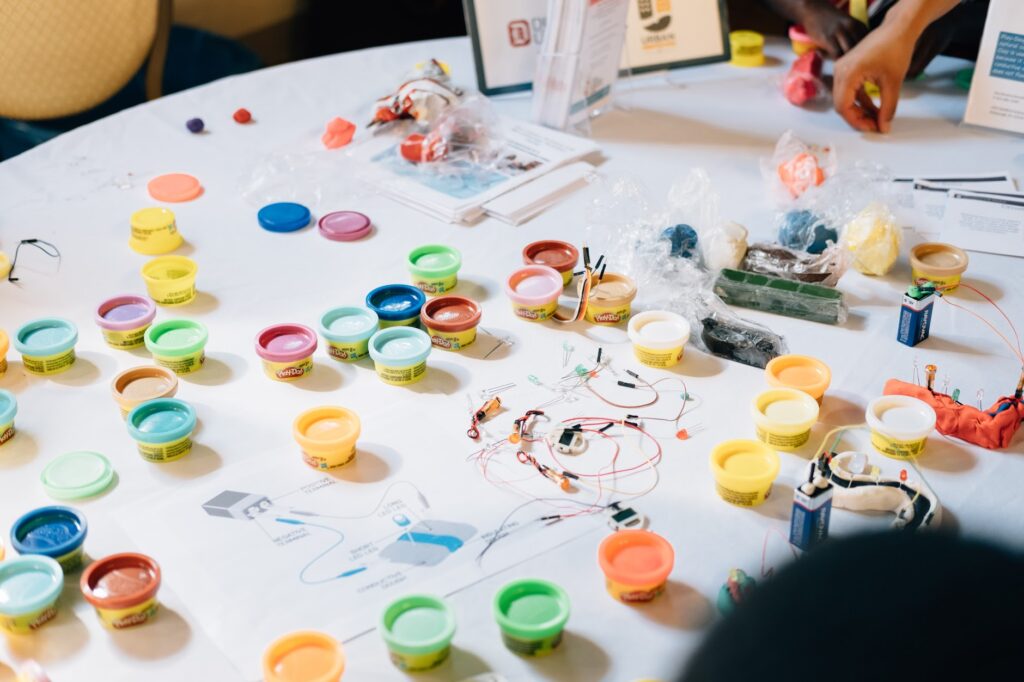Mixing art into STEM curricula is in full force in Pittsburgh. From STEAM Labs to revamped libraries, kids are tapping into their creativity as they use technology, create media, and solve problems in divergent ways.
But there’s another skill that’s just as critical as creativity when it comes to preparing kids for an innovation economy—imagination. As John Seely Brown, author and visiting scholar at University of Southern California, explained in a Spotlight on Digital Media and Learning interview, innovation depends on imagining things the world hasn’t seen yet, not just improving what’s already around.
“The real key is being able to imagine a new world. Once I imagine something new, then answering how to get from here to there involves steps of creativity. So I can be creative in solving today’s problems, but if I can’t imagine something new, then I’m stuck in the current situation,” Seely Brown said.
In other words, creativity improves things, but imagination is at the heart of breakthroughs. Seely Brown goes on to explain that art and music are some of the most important things to teach because of their ability to spur imagination.
“Being great at math is not that critical for science, but being great at imagination and curiosity is critical,” he said.
It seems Albert Einstein would have agreed with Seely Brown. “When I examine myself and my methods of thought, I come close to the conclusion that the gift of imagination has meant more to me than any talent for absorbing absolute knowledge,” he once told a friend.
For an even closer example of how imagination is at the core of innovative science, take marine biologist Denise Herzing. In a feature article, Outside Magazine dives deep into her groundbreaking quest to create the first ever two-way communication between wild dolphins and humans. By introducing dolphins to computer-created whistles, Herzing hopes the dolphins will eventually mimic the sounds to request different toys. Herzing and her team have to be endlessly creative in solving all sorts of problems that have arisen on the boat—how do you immerse a computer in saltwater?—but her curious imagination is the root of the whole experiment. Before anything else, Herzing had to imagine, what if animals could talk back to us?
While imagination is at the heart of scientific discovery, it’s also increasingly important in the more typical, dolphin-less jobs that fuel the economy and provide people secure financial futures. We’ve mentioned Enrico Moretti’s book, “The New Geography of Jobs” before. In it, he explains that for the first time, “the factor that is scarce is not physical capital, but creativity.” Products can be cheaply manufactured pretty much anywhere. But the better jobs lie in innovation, design, and engineering. The innovation sector “determines the salary of many Americans, whether they work in innovation or not.”
So if imagination that leads to innovation is key for bright economic futures, how do schools and learning networks cultivate it? Or is that beyond the purview of schools?
At the heart of journalist Maria Popova’s the endlessly fascinating Brain Pickings site is the notion of “combinational creativity,” or the idea that creativity emerges from existing bits of ideas, memories, and knowledge we’ve been collecting our whole lives. But Popova’s idea of where creativity comes from is closely linked to the root of imagination, too.
“What enables the imagination is consciousness and the totality of our experience—everything we know, everything we’ve seen and heard and read, everything we’ve accumulated in the course of being fully awake to the world,” Popova writes in a post summarizing French philosopher Jean-Paul Sartre’s take on imagination. “The imagination, in other words, is a combinatorial phenomenon—something artists, designers, writers, and scientists understand.”
An imaginative idea might rise to the surface in only a second but it’s actually the product of a whole lifetime of experiences. Ideas aren’t developed in a vacuum, they’re all pulled from bits and pieces of what we’ve learned and experienced and combined in unique ways.
That means exposing kids to all sorts of different experiences is perhaps one way schools can give kids more to pull from and harbor robust imaginations. From planting hydroponic gardens to building catapults, running mini-businesses to designing games, Pittsburgh is nurturing imagination by giving kids an education packed with different places, people, and things.
Envisioning a learning ecosystem full of diverse, hands-on experiences takes some imagination itself. The Kids+ Creativity Network is reimagining education as a whole so that as kids go forward, they’ll be ready for careers that ask them to not only think outside the box but to ignore it entirely.
